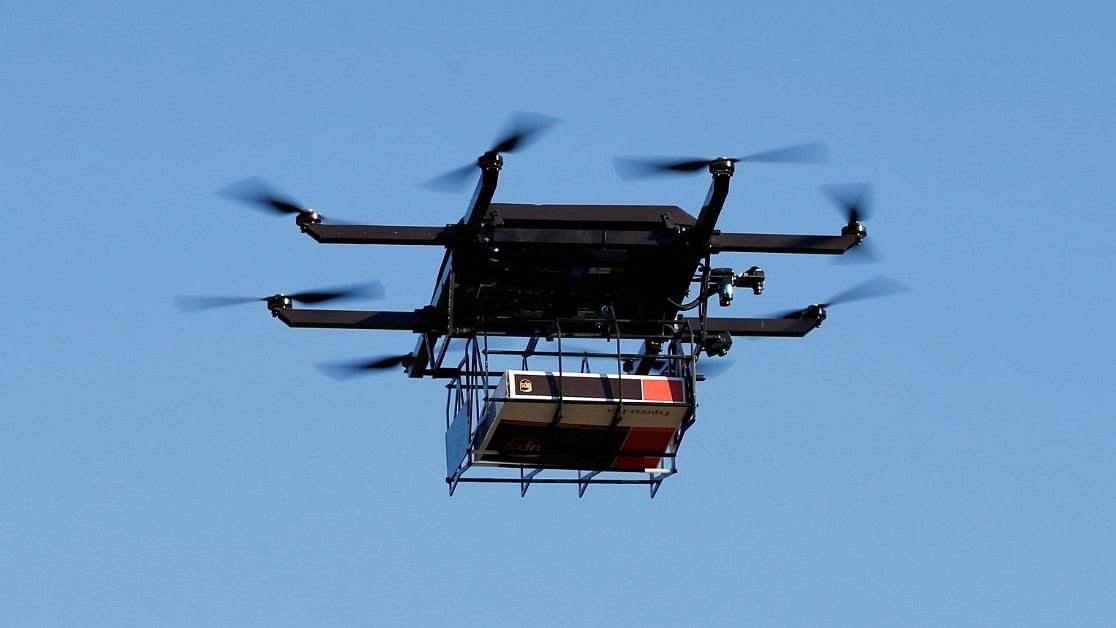
Representative image of a drone.
Credit: Reuters Photo
In line with Centre's push for use of unmanned aerial vehicles in rural areas, especially in agriculture, the Rural Development Ministry has formulated a new policy for use of drones to monitor works under the Mahatma Gandhi NREGS.
Drones will be used for monitoring ongoing work, inspection of completed work, and impact assessment. It can also be used by Ombudspersons appointed in each district to address grievances.
The expenditure towards using drones may be made under the Admin contingency component of the MNREGS, which is around 10 per cent of the fund allocated to the state.
No additional allocations have been made towards it and states have been directed to hire agencies specialising in using drone technology.
"To leverage the use of drones, it has been proposed to use this technology for monitoring and inspection of works and quality of assets under Mahatma Gandhi NREGS," the circular with the standard operating procedures said.
Drones will be used for monitoring works underway by capturing geo-referenced images before the start, during execution, and after the completion of the work.
Drones will also be used for gathering time series data for impact assessment of natural resource management, water and agriculture-related works done under the scheme.
Special inspections will also be carried out using drones, for enquiring complaints against the work or asset created, the circular said.
It will help Ombudspersons who are appointed in each district to receive grievances. The Ministry said Ombudsperson may also use drones for verification of the works virtually.
"This facility will help Ombudsperson to pass awards in a bound manner. Therefore, the state government should provide drone facility to Ombudsperson for timely redress of complaints against a demand by the Ombudsperson," the ministry said.
The quantum of the monitoring of works using drones may be decided by the states or Union Territories, it said.
The ministry in its SoPs has directed that drones being used should have a high-quality camera.
Users have also been asked to carry out the monitoring through drone in better light condition when the sun is overhead to minimise the shadows in photographs and it is also suggested to avoid partly cloudy days and high winds. The drone should be able to remain airborne for a minimum period of 30 minutes.
All videos and images through drone should be shared with the NREGA Soft.
Data generated over a period of time must be stored for comparison of time series data. The data can be used for systematic and scientific planning and monitoring of the rural area.
Addressing the nation from the ramparts of the Red Fort on the 77th Independence Day, Prime Minister Narendra Modi made a pitch for use of science and technology in rural development.
The PM said that 15,000 women's self-help groups would be given loan and training for operating and repairing drones.